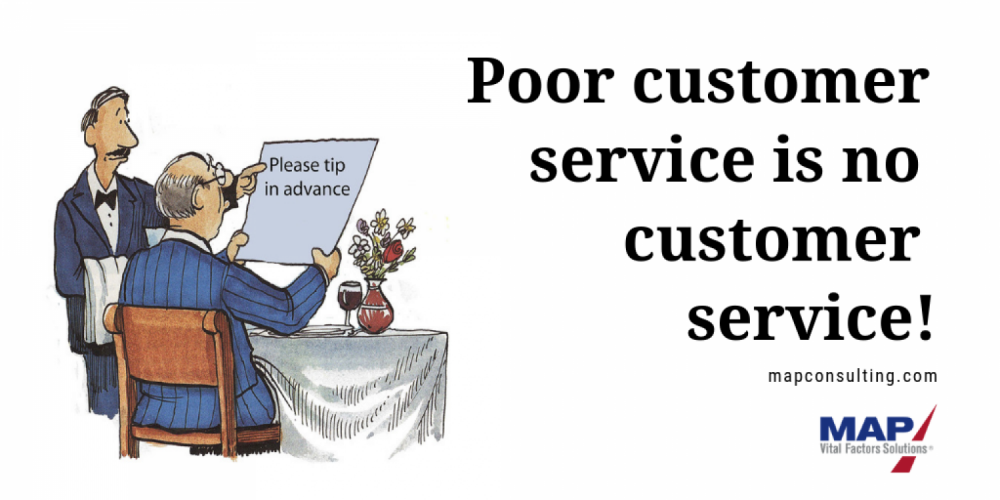Customer Loyalty: How to Build and Keep It
With holiday shopping kicking into gear, there tends to be an increase of awareness around customer service levels at this time of year. That’s because for many companies the holiday season affords an opportunity to wow customers and build loyalty. But it also can become an opportunity to do just the opposite if customers come away unimpressed. The topic of wowing your clients or customers should be evergreen for you. After all, if you’re like most MAP clients, you depend on the revenue of some kind of audience. But more importantly, you need the loyalty of those in that audience to help ensure your business remains sustainable. For example, an interesting 2016 survey of 5,000 customers gives a snapshot into what people value most in consumer shopping today. Results show it’s nothing extraordinary. It’s things like prompt service, a personalized experience and smart recommendations. So what’s the takeaway for all of us? Regardless of what people are being sold or how they’re being served, they just want to be truly helped and feel special and respected by you. Above all, they want to feel important. Considering this, what is your organization doing to treat them like VIPs and build greater customer loyalty?
In MAP’s recent book, The Disciplined Leader, we discuss the importance of focusing on key strategies, such as building and sustaining customer loyalty. Here are some points to consider:
Listen to your customers. Customer loyalty is all about building beneficial relationships. One of the most surefire ways you can do this is by listening to them, getting greater insight into their wants and needs, and then responding in ways that generate satisfaction on behalf of both their and your organization’s interests. Or, in some cases, it may mean not responding. For example, MAP once had a client who, in the midst of some serious strategic planning, was extremely worried about whether she was steering her company in the right direction. So she surveyed her customers for the first time and discovered, much to her surprise, that most loved what she was doing, the degree of product quality being provided, and the business direction overall. Had she not made that effort to seek feedback and listen to this audience, she could have made some poor decisions that could have drastically damaged customer loyalty and company profitability. You, too, can create new habits around listening to customers in a variety of ways. You may want to get feedback by consulting with your frontline employees about what they’ve heard from customers. Or perhaps you want to survey customers directly. You might also want to reach out to people who have discontinued using your services or products via a straightforward “quit study.” (Learn more about Quit Studies in “The Disciplined Leader.”) Point is, listening provides enlightenment. Building in practices that support this strategy is a proven way to get what you need to learn, make decisions and take appropriate action.
Keep customers in the crosshairs of decision-making. It’s safe to say that you and your team make decisions all the time. No doubt, some of those decisions are related to your Vital Few, or those key measures of your company’s health. So think carefully about how those decisions are being made, who is involved, and who is impacted. A lot of times, customers are very much affected yet their interests sometimes go overlooked or at least aren’t valued as highly as perhaps other factors or parties in the decision-making process. At MAP, we challenge our clients to explore their habits around decision-making and, in particular, point out the value of keeping customers’ interests front and center, especially when decisions will impact this critical audience. As mentioned above, listening to your customers is a great start. But you can also take action by establishing an accountability process that ensures they remain in the crosshairs of decision-making. In addition, you can work with others in your organization to create a philosophy for greater customer service. Then develop and share guidelines based on the philosophy with all team members so it all becomes ingrained in your organization’s culture.
Know your competition. Shrewd organizations know their competition. What’s more, becoming an expert on your competitors is an essential aspect of your leadership impact. So dig deep to get the answers you need. For instance, you can shop your competition, placing calls to find out how you’re similar and different in terms of products, services, customer experiences, etc. You can also learn a lot about your competitors by scouting out their websites, which reflect (for free) valuable real-time information both via their more stagnant webpages as well as their ever-changing social media feeds. Finally, don’t be afraid to talk to competitors’ customers. It can be a bit tricky to do, but it’s certainly possible to conduct focus groups for the purpose of improving your own offerings and developing a competitive edge. If you use what you learn wisely, you can then raise the bar in terms of how you cater to and meet your customers wants and needs.
What is one strategy that has improved customer loyalty for your business?



